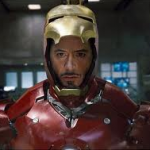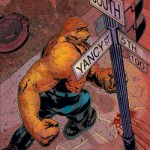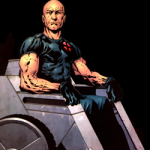 In response to my last blog entry, a comic-collecting friend reminded me that, ever since the 60’s, Marvel Comics has introduced many characters (often super-powered) with imperfections. This contrasts with the other big comic company, DC, creator of smart and traditionally handsome figures like Superman and Batman.
In response to my last blog entry, a comic-collecting friend reminded me that, ever since the 60’s, Marvel Comics has introduced many characters (often super-powered) with imperfections. This contrasts with the other big comic company, DC, creator of smart and traditionally handsome figures like Superman and Batman.
Marvel characters have ranged from the science nerd, Peter Parker, who turns into Spiderman, to Tony Stark aka Iron Man – the billionaire who builds a chest-plate and suit of armour to keep his damaged heart running.
 Perhaps in reaction to DC’s glossy approach, this became a formula for Marvel. There was “you wouldn’t like me when I’m angry” Bruce Banner, who becomes The Hulk and Benjamin Grimm: The Thing, who spends years struggling with public reactions to his external appearance.
Perhaps in reaction to DC’s glossy approach, this became a formula for Marvel. There was “you wouldn’t like me when I’m angry” Bruce Banner, who becomes The Hulk and Benjamin Grimm: The Thing, who spends years struggling with public reactions to his external appearance.
Other characters include Daredevil Matthew Murdock. He saved a man from an out-of-control truck and was injured by radioactive waste in so doing. As a result, this gave him enhanced senses that he used to fight crime.
 Most interestingly perhaps, there is wheelchair-using Professor X Charles Xavier. He was reputedly based upon Martin Luther King and was born with telepathic abilities. His dream was to aid integration of “mutants” with “normal” homo sapiens and create a fully inclusive society.
Most interestingly perhaps, there is wheelchair-using Professor X Charles Xavier. He was reputedly based upon Martin Luther King and was born with telepathic abilities. His dream was to aid integration of “mutants” with “normal” homo sapiens and create a fully inclusive society.
Do such creations strengthen the notion of a freak show, with characters hellbent on putting the world to rights, as some sort of obsessive and maniacal recompense for their situations? Some would argue it does and we should avoid it. I think it depends on how the story is told. Some more modern interpretations of these characters are a lot more empathetic and three-dimensional, seeing beyond the disability and creating well-rounded individuals with fleshed-out personalities.
